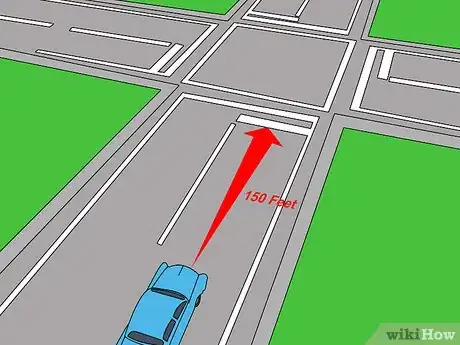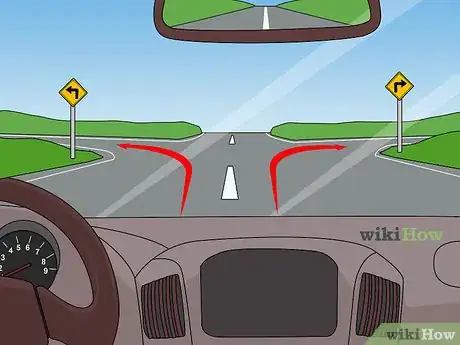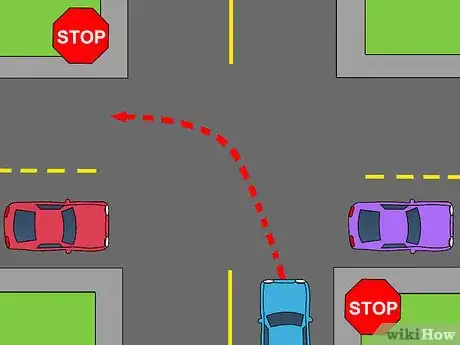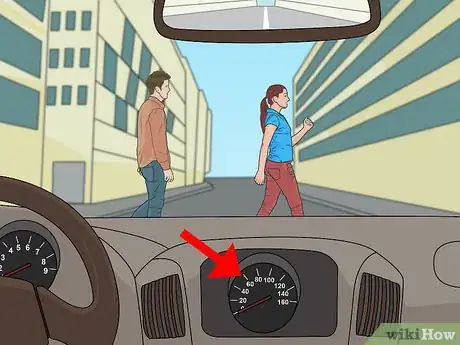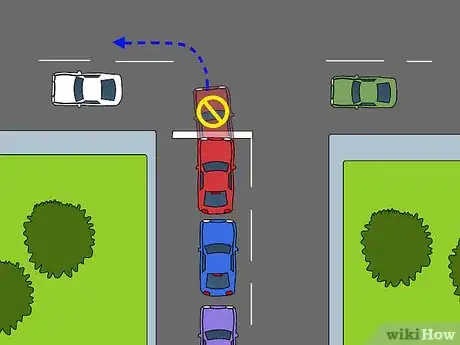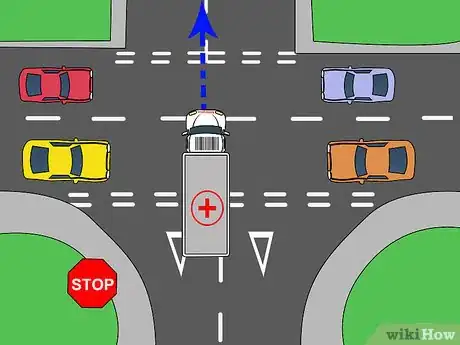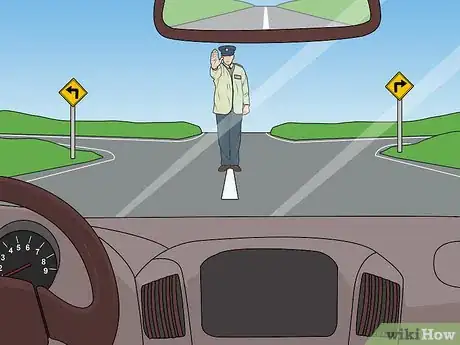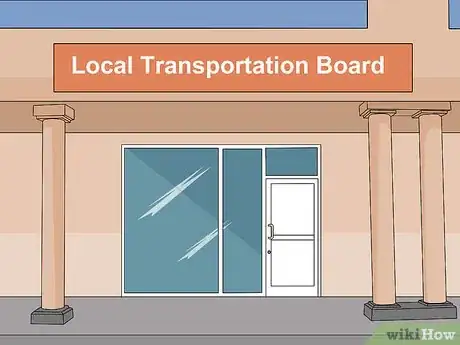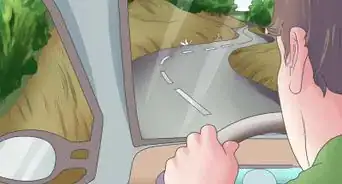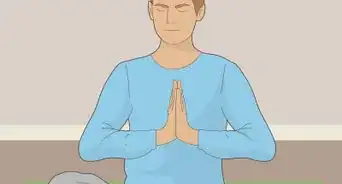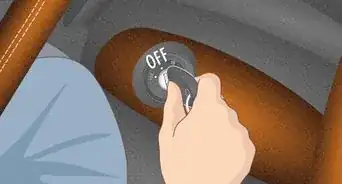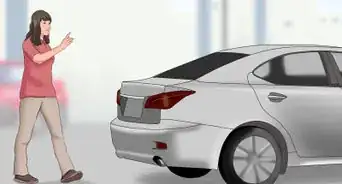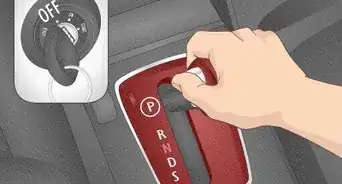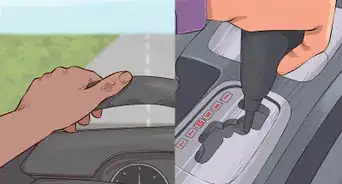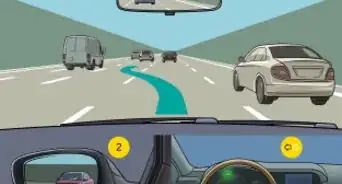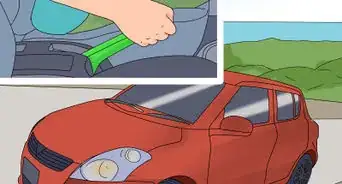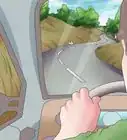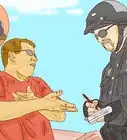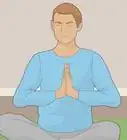This article was co-authored by Ibrahim Onerli. Ibrahim Onerli is a Driving Instructor and the Manager of Revolution Driving School in New York City. His mission is to make the world a better place by teaching safe driving. Ibrahim trains and manages a team of over eight driving instructors. He specializes in teaching defensive driving and stick shift driving.
There are 7 references cited in this article, which can be found at the bottom of the page.
This article has been viewed 563,819 times.
A stop sign is used to control traffic and is usually found at road intersections. Stop signs instruct drivers about the right-of-way and ensure proper notice is taken to avoid accidents. Standard stop signs are red octagons with “STOP” printed in white letters. When you see one at any corner or intersection, know that you must stop and proceed only if the way ahead is clear, and after obeying any rules regarding right-of-way.
Steps
Making a Stop
-
1Anticipate the need to stop. Sometimes, you will see a stop sign clearly in the distance as you approach it whilst other times there might be fog or other cloudy mist making it harder to see. In cases such as on hills or around blind curves, you may not be able to see a stop sign until when you are closer to it. In some of these cases, you will see a separate sign warning you ahead of time that a stop sign is approaching. Whatever the situation, be prepared to slow down as soon as you see a stop sign.[1]
-
2Allow adequate time and distance to stop. The exact amount of time or distance you need to stop will depend upon a number of factors, including your speed, the weather, and the physical conditions of the road. However, you should start slowing down at least 150 feet before the stop sign. If you are traveling at high speeds, if the weather conditions are poor, or if the road conditions are dangerous (for instance, if the stop sign is at the bottom of a very steep hill), then you will need to allow more time and distance to slow down.
- If you stay within the speed limit enforced on a given road, you should generally have adequate time to slow down and halt at a stop sign, whether or not you see it long ahead of time.
Advertisement -
3Come to a complete stop. When you come upon a stop sign, come to a complete halt so that your vehicle has no momentum.[2] Do not simply slow down or pause.
- Try to come smoothly to a stop rather than slamming on the brakes.
- If there is a solid white bar or a crosswalk painted across the intersection, you should stop before it, so that you don’t block it.
- If there is no painted stopping line, then stop slightly before the stop sign so that you can see in all directions at the intersection.
- If you cannot see clearly around the intersection, slowly pull forward slightly until you can see, and come to a complete stop again.
- If another vehicle is already stopped at the stop sign in front of you, you must first stop behind it, then again come to a complete stop at the stop sign once that vehicle moves on.
EXPERT TIPIbrahim Onerli is a Driving Instructor and the Manager of Revolution Driving School in New York City. His mission is to make the world a better place by teaching safe driving. Ibrahim trains and manages a team of over eight driving instructors. He specializes in teaching defensive driving and stick shift driving.Driving Instructor
 Ibrahim Onerli
Ibrahim Onerli
Driving InstructorOur Expert Agrees: If there's a white line, stop just before that line, and if there are additional lines, stop just in front of the first one. However, if there are no lane markings, stop about a foot before you reach the stop sign.
-
4Recognize the kind of intersection. Stop signs may be used at several kinds of intersections, and different traffic rules are enforced at each. It is important to know which kind of stop you are approaching so that you know which rules to follow.
- A two-way stop is used when two roads intersect, but traffic on only one road is required to stop at the intersection.
- A four-way or all-way stop is used when two roads intersect, and traffic moving in all directions must stop at the intersection.
- A T-junction is formed when one road dead-ends in another perpendicular to it (forming a shape that resembles the letter “T”). T-junctions may have a three-way stop, in which traffic moving in all directions must stop at the intersection, or they may have only a stop sign for the traffic moving toward the intersection from the road that dead-ends.
- Many stop signs will have a smaller sign below the red octagon indicating if the stop is a four-way, three-way, etc.
-
5Look both ways for traffic. Even after you stop, you are required to let any traffic moving across your path go by first. If there is no traffic, you are free to proceed through the intersection (or turn) after coming to a complete stop. If traffic is visible but at a distance far enough away that it will not reach the intersection before you cross it, you may proceed.[3] However, you must always move across an intersection at a reasonable speed, and avoid trying to cross when traffic is dangerously close to the intersection.
- Only cross the intersection if any traffic is a safe distance away. The exact distance will depend on the speed of the oncoming traffic and other concerns, so always use good judgment and play it safe.
- Remember that traffic on the road may include bicyclists, motorcycles, and other vehicles, in addition to automobiles.
-
6Check for pedestrians. If there are pedestrians moving across the intersection (people walking, strolling, bicycling, skating, etc.), you are required to let them go by before crossing it yourself. This is true even if there is no other motor vehicle traffic at the intersection. Unless laws in your area specifically state otherwise, you should let pedestrians cross an intersection first even if there is no visible crosswalk.
-
7Obey right-of-way. If there is already another vehicle (car, motorcycle, bicycle, etc.) stopped at the stop sign across the street from you when you come to the stop sign, you are required to let it proceed first. The vehicle may turn to the left or right (your right or left), or move straight across the intersection. Whatever the case, let that vehicle go by before proceeding through the intersection.
- If two vehicles come to a stop at an intersection at the same time, a driver turning left must yield to traffic going straight or turning right.[4]
- In all cases, let safety prevail.[5] [6] Do everything you can to prevent an accident. For instance, if another vehicle starts to proceed before its “turn,” just let it go by and proceed when the roadway is clear.
-
8Cross the intersection. Once the roadway is clear of oncoming vehicles and pedestrian traffic, and you have yielded the right-of-way to any vehicles already stopped at the intersection, you may proceed across it. Move at a reasonable speed, and continue on your way.
Obeying Rules of Special Situations
-
1Obey right-of-way at a four-way or three-way stop. When you come to a four-way or three-way stop, the right-of-way rules are slightly different.[7] Drivers should proceed through the intersection in the order in which they arrive at the stop (regardless of which direction they are moving in), making sure to yield to any pedestrians first. If two cars come to the intersection at the same time, The car to the right has the right of way.
-
2Stop at a school bus stop sign.[8] School buses have stop signs that pop up when the buses are stopped to let schoolchildren on or off. When you see a bus stopped with its stop sign(s) displayed, come to a complete stop at a safe distance from the bus (15 feet away is recommended). Remain stopped until all children have boarded or exited the bus. Even after the stop sign is put away and the bus moves on, double-check to make sure there are no children in or next to the road. Proceed only when your path is completely clear.
-
3Stop for pedestrians, whether or not a regular stop sign is visible. You should stop for pedestrians at a crosswalk, even if the crosswalk is in the middle of a block rather than at an intersection of two or more roads.[9] [10] In some cases you may see a STOP sign, a small STOP sign icon, or a phrase such as “STOP for Pedestrians.” Whether or not you see such a sign, however, you should come to a complete stop to let pedestrians cross at a crosswalk.
-
4Don’t cross an intersection if traffic is backed up.[11] If you come to a stop sign at an intersection, and traffic on the other side of the street headed in your direction is not moving, do not cross the intersection. Wait until traffic clears on the other side and it is safe to proceed through. If you attempt to cross an intersection when traffic is backed up, you may end up blocking the intersection and increasing the chance of an accident or delay.
-
5Always yield to emergency vehicles.[12] If you are at a stop sign at an intersection and it would otherwise be your “turn,” wait if you see or hear an emergency vehicle (ambulance, fire truck, police car, etc.) coming. Let the emergency vehicle go by first before proceeding through the intersection.
-
6Obey a police officer directing traffic.[13] If there is a police officer or other official at an intersection directing traffic, you should obey that person’s orders. Follow the official’s signal for when it is your turn to proceed through the intersection, regardless of what normal rules dictate.
-
7Request a stop sign if you think one is needed. If you think a stop sign is necessary at a certain intersection, contact your local transportation board, road commission, town council, etc. about your suggestion. However, you must make a good case for why the sign is needed, and understand that:
- Stop signs are not really used to control speed. In fact, studies have show that many drivers tend to increase their speed between stop signs.
- Too many stop signs can also increase pollution and cause traffic congestion.
- The decision about whether or not to erect a stop sign is usually governed by several factors, such as the number of crashes that have occurred at the intersection, traffic flow and volume, and visibility at the intersection.
Community Q&A
-
QuestionIf there is a distance between stop sign and stop line, should I stop before the stop sign or the stop line?
 Community AnswerBefore the stop line. If needed, you can slowly pull up a little and then stop again when you have a good view of traffic in all directions.
Community AnswerBefore the stop line. If needed, you can slowly pull up a little and then stop again when you have a good view of traffic in all directions. -
QuestionIf I approach a stop sign with a large hedge blocking the view of traffic on the left and right, should I stop at the sign, or proceed forward until I can see?
 Community AnswerYou should stop at the sign and then proceed to a point where you can see the traffic.
Community AnswerYou should stop at the sign and then proceed to a point where you can see the traffic. -
QuestionWhere do you stop if the stop sign is before the white line?
 Community AnswerStop before the white line. You should stop within two feet of it, so the bumper does not go over the line.
Community AnswerStop before the white line. You should stop within two feet of it, so the bumper does not go over the line.
Warnings
- Driving is a very dangerous activity. Never drive if you are under medication or intoxicated. Always be cautious of other vehicles, pedestrians and cyclists.⧼thumbs_response⧽
- Local laws may vary, so always obey the traffic regulations enforced in your area.⧼thumbs_response⧽
- If you violate stopping rules and are caught in the act, you can face tickets, fines, and other penalties.⧼thumbs_response⧽
References
- ↑ http://www.gov.pe.ca/highwaysafety/index.php3?number=1045184&lang=E
- ↑ http://www.iowadot.gov/mvd/driverslicense/dlmanual/section2.pdf
- ↑ http://codes.ohio.gov/orc/4511.43
- ↑ http://www.safeny.ny.gov/roadrule.htm
- ↑ http://www.safeny.ny.gov/roadrule.htm
- ↑ http://www.iowadot.gov/mvd/driverslicense/dlmanual/section2.pdf
- ↑ http://www.iowadot.gov/mvd/driverslicense/dlmanual/section2.pdf
- ↑ http://www.iowadot.gov/mvd/driverslicense/dlmanual/section2.pdf
- ↑ http://www.ncsl.org/research/transportation/pedestrian-crossing-50-state-summary.aspx
About This Article
The best way to stop at a stop sign is to start slowing down when you’re about 150 feet from the stop sign. When you reach the stop sign, come to complete stop by pressing on the brakes. If there’s a car in front of you, stop and wait for them to go, then pull up to the stop sign and stop again. If another car got to the intersection before you, let them go first. If you’re not sure, make eye contact with the other driver, and wave for them to go first. For tips on how to deal with special stop sign situations, like four-way stops, read on!

